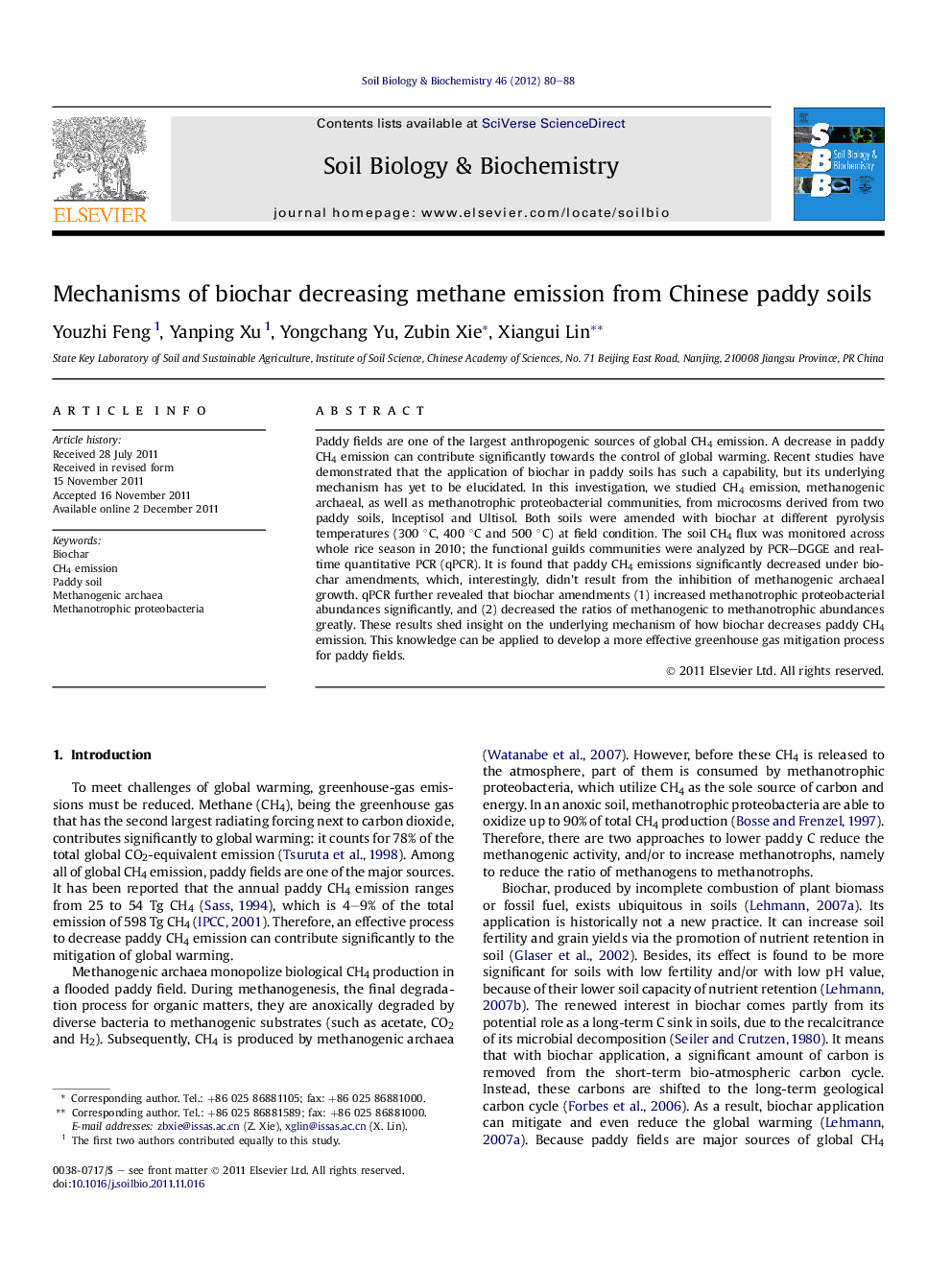| Article ID | Journal | Published Year | Pages | File Type |
|---|---|---|---|---|
| 2025008 | Soil Biology and Biochemistry | 2012 | 9 Pages |
Paddy fields are one of the largest anthropogenic sources of global CH4 emission. A decrease in paddy CH4 emission can contribute significantly towards the control of global warming. Recent studies have demonstrated that the application of biochar in paddy soils has such a capability, but its underlying mechanism has yet to be elucidated. In this investigation, we studied CH4 emission, methanogenic archaeal, as well as methanotrophic proteobacterial communities, from microcosms derived from two paddy soils, Inceptisol and Ultisol. Both soils were amended with biochar at different pyrolysis temperatures (300 °C, 400 °C and 500 °C) at field condition. The soil CH4 flux was monitored across whole rice season in 2010; the functional guilds communities were analyzed by PCR–DGGE and real-time quantitative PCR (qPCR). It is found that paddy CH4 emissions significantly decreased under biochar amendments, which, interestingly, didn't result from the inhibition of methanogenic archaeal growth. qPCR further revealed that biochar amendments (1) increased methanotrophic proteobacterial abundances significantly, and (2) decreased the ratios of methanogenic to methanotrophic abundances greatly. These results shed insight on the underlying mechanism of how biochar decreases paddy CH4 emission. This knowledge can be applied to develop a more effective greenhouse gas mitigation process for paddy fields.
► Biochar amendment significantly decreased paddy CH4 emission. ► Biochar didn't inhibit, and, on the contrary, even stimulated paddy methanogens. ► The greater stimulated biochar effect on methanotrophic proteobacteria was observed. ► Biochar amendment can both sustain soil productivity and reduce global warming.
